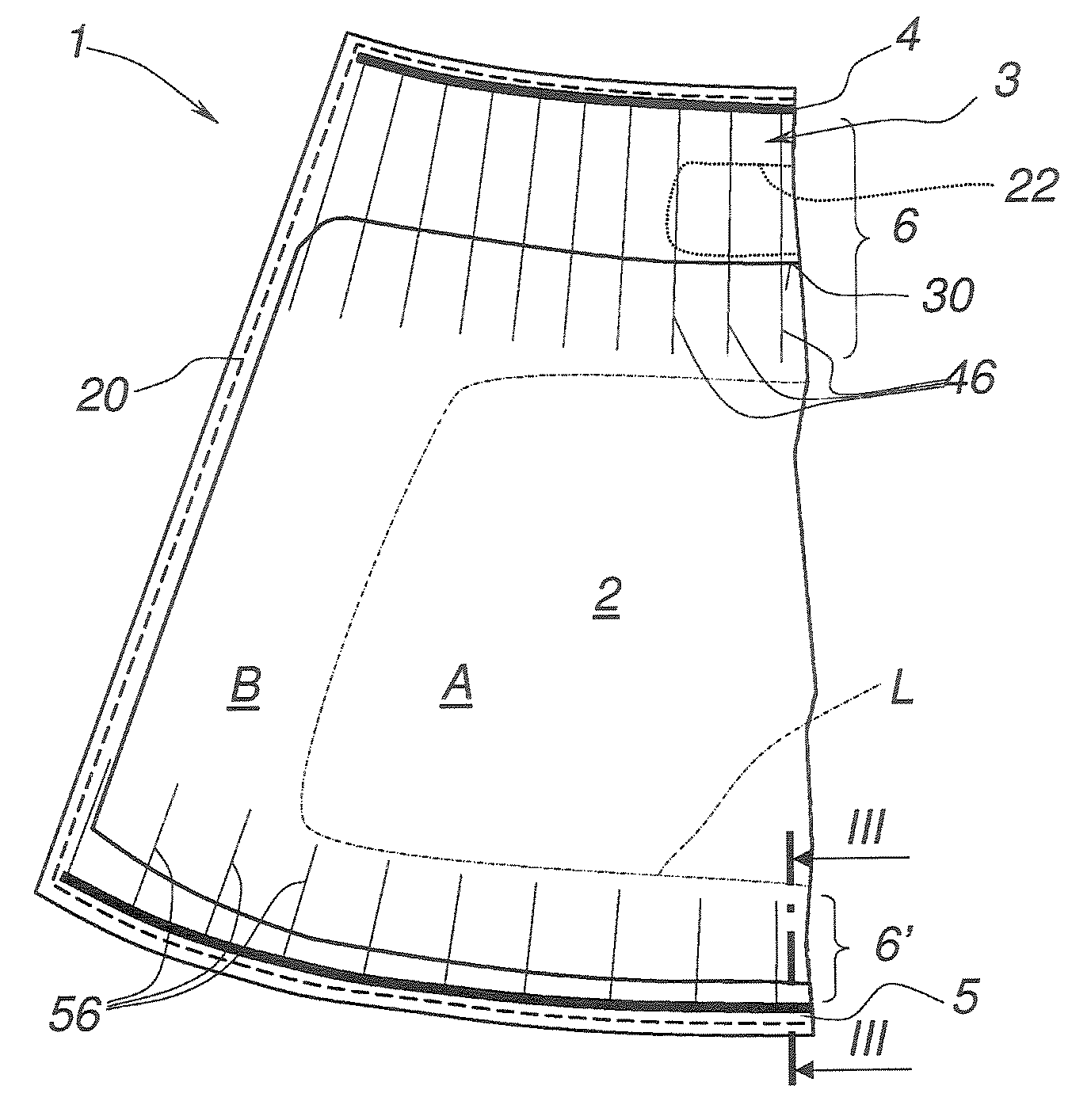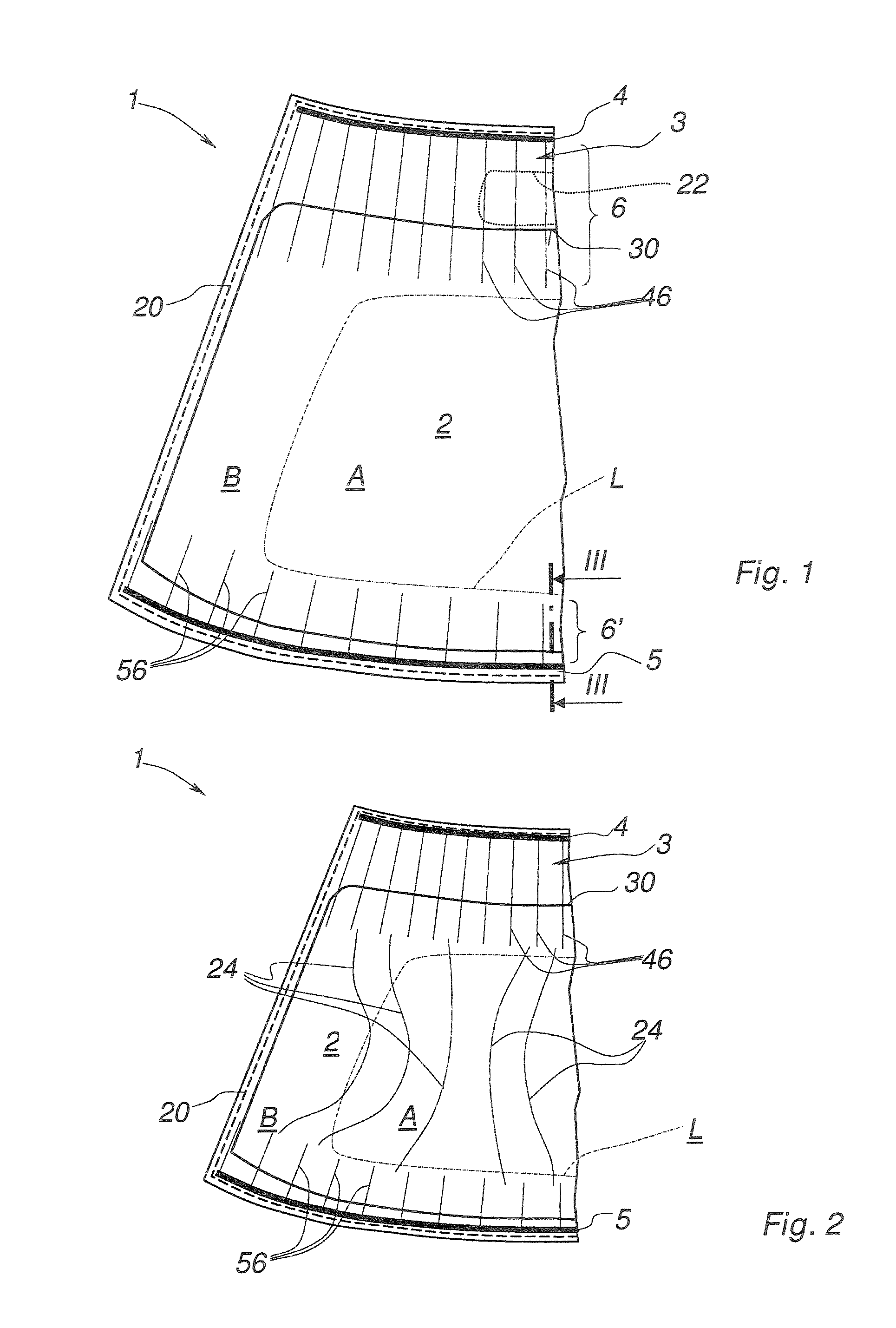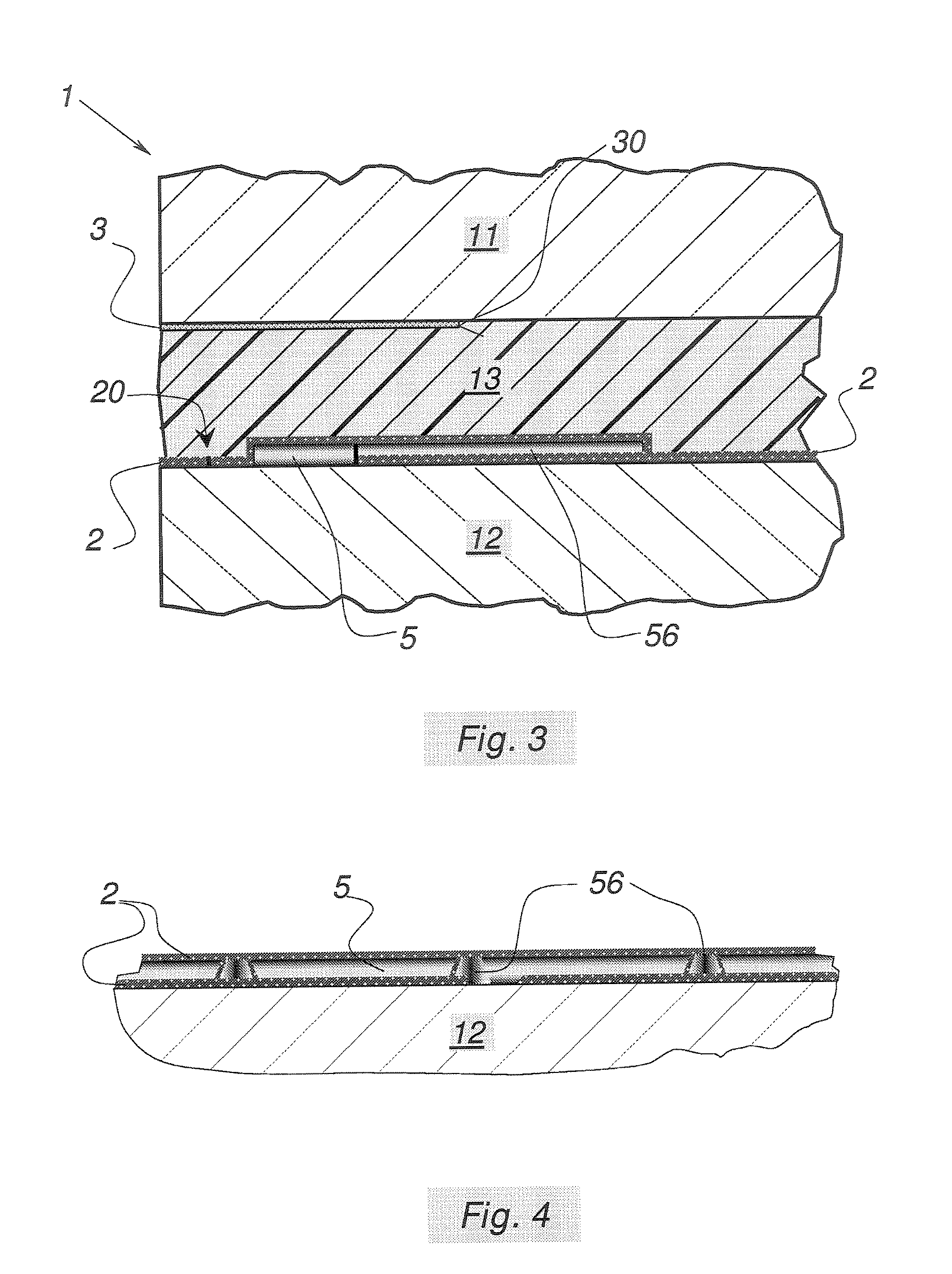Transparent window pane provided with a resistive heating coating
- Summary
- Abstract
- Description
- Claims
- Application Information
AI Technical Summary
Benefits of technology
Problems solved by technology
Method used
Image
Examples
Embodiment Construction
[0069]In the figures, an electrically resistive transparent coating 2 is placed over the entire surface in a manner known per se in a heated laminated glazing unit 1 having an essentially trapezoidal (curvilinear) outline. The glazing unit 1 has been shown here only in one half—its other half is equivalent.
[0070]The coating 2 is deposited in a known manner on a main face of a substrate 11, this substrate then being integrated into the glazing unit 1.
[0071]A broken line denoted by 20 indicates that the outer edge of the continuously coated surface lies all around, but slightly set back toward the inside of, the peripheral outer edge of the laminated glazing unit 1, that is to say an edge band is provided in the coating all around the surface. Thus, the coating is, on the one hand, electrically isolated from the outside and, on the other hand, protected against any corrosion damage penetrating via the outer edge of the glazing. The outer edge 20 may be set back by removing the coating...
PUM
 Login to View More
Login to View More Abstract
Description
Claims
Application Information
 Login to View More
Login to View More - R&D
- Intellectual Property
- Life Sciences
- Materials
- Tech Scout
- Unparalleled Data Quality
- Higher Quality Content
- 60% Fewer Hallucinations
Browse by: Latest US Patents, China's latest patents, Technical Efficacy Thesaurus, Application Domain, Technology Topic, Popular Technical Reports.
© 2025 PatSnap. All rights reserved.Legal|Privacy policy|Modern Slavery Act Transparency Statement|Sitemap|About US| Contact US: help@patsnap.com



